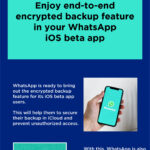Being a multi-purpose tool, mobile marketing focuses on one goal, depending on the specific need of the app.
Some companies follow mobile marketing growth with the help of a targeted campaign, enlarging their active user base. Some believe in mobile engagement, which builds loyal relationships with their use for better customer satisfaction. And some develop their campaign focusing on mobile retention to let their current user get engaged for the long run.
Every mobile marketing is different with every goal. But if you don’t know where to start, we are here to help you with four examples that can guide you to an engaging mobile marketing campaign.
Strengthen customers’ beliefs by listing recognized achievements.

It is a critical aspect of getting long-term user retention, and a straightforward way to get that is to recognize user achievement.
Here achievement refers to the milestone that the user had reached while using the app. For example, if it is a gaming app, certain rewards will be given after they clear the level. In the case of a non-gaming app, users can be given gifts after reaching a particular engaging milestone.
An in-app message can be incorporated, congratulating them along with offering coupons or discounts. A simple recognization can also work wonders in promoting customer loyalty.
Conversion of trial users into paid subscribers.

Some apps offer their functionality for free and provide extra features to paid customers. For example, there are music apps that provide ad-supported free versions as well as ad-free paid versions. The conversion of free to paid is essential for the monetization of the apps.
This type of mobile marketing campaign target free users who go for a free trial of paid features. After a few weeks of user engagement on the app, a triggered in-app message of a free trial offer with no strings attached is provided. Acceptance of the trial makes the users eligible to use all the paid features and evaluate whether they want to be the pro user.
When the free trial ends, send the user the reminder of what features they will miss out on as a free version user. Pointing the benefits of a paid version will encourage some users to convert.
Reactivating dormant app users.

Even the most engaging app faces dormant users. On average, according to a report, thirty different mobile apps are launched per month. However, it looks like a more prominent number, but only half are installed on the user’s phone. And among them, only half is used by mobile users. So, it’s inevitable that some users fall dormant. Therefore reactive campaign is an example to rejuvenate the users. They target the inactive users, and tries bring them back to the app.
Dormant users are those who are not using the app. Therefore the reactivation campaign revolves around the external messaging channel, like push notifications or emails. They include offers, discounts or any promotion to attract the users.
The basic app that uses this mobile marketing idea is ridesharing apps, giving a discount to their dormant users on their next trip.
Onboarding reminder to activate new users.

Onboarding flow eases new users into the app. Rather than bring them directly, add a quick guide through the key features and prompt them for the required device permission or fill up the user account info.
Many users do not complete the onboarding right away because of the time taken or too much screen reading. Unfortunately, these types of users do not turn up later, turning the percentage of dormant users high.
Let’s get the onboarding reminder clear with an example:
• Prepare a segment for users who started the onboarding flow but haven’t completed it.
• Then, after obtaining the push notification permission, send it before the end of the day.
• If you don’t have push notification permission, use the email or SMS to convey your message.
• And, at last, when the user re-launches, the app redirects them to onboarding flow.





Pingback: Change your mobile marketing game with these fo...